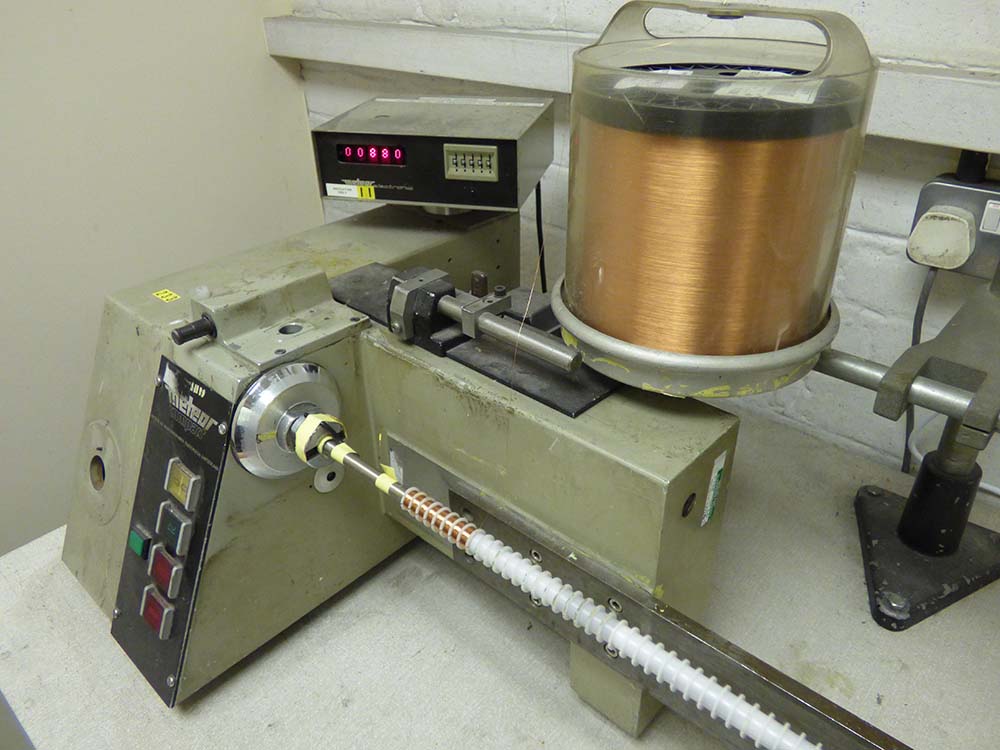Whilst there are several ways to measure displacement, the Linear Variable Differential Transformer (LVDT) remains the de facto transducer in most industrial applications. Andy Anthony, Managing Director of Monitran, discusses why the sensor type remains so popular.
As an OEM of sensors we have seen our LVDT sales figures increasing steadily during recent decades; even during economic downturns. This we can only attribute to the continued popularity of this well-established, rugged and reliable transducer technology.
LVDTs were initially employed as a means of taking dimensional readings in laboratories, where they continue to be used. They soon gained popularity in a wide variety of industrial monitoring and control applications, and whilst an LVDT is used to measure displacement the technology can be employed within other transducer types. For example, LVDTs are employed in float sensors and certain types of pressure transducer.
In essence, an LVDT is a transformer with a core that is free to move between its primary and secondary windings. The secondary winding is in two halves, wound in opposite directions, so when the primary windings are energised, with a constant amplitude AC supply of between 1 and 10 kHz, the voltage induced in one half of the secondary winding will be 180o out of phase to the other.
If the secondary windings are connected in series, the LVDT is considered to be in ‘differential mode’, and the LVDT’s output will be the sum of the induced, and out-of-phase, voltages. Accordingly, when the core is positioned such that the induction in both halves of the secondary winding is equal but opposite, the output is 0V; a.k.a. “the LVDT’s null position”. The secondary output signal is then processed by a phase-sensitive demodulator which is switched at the same frequency as the excitation signal.
An alternative to summing the two secondary windings in series is to compare them in what is known as the ‘ratiometric configuration’. The benefits of doing so include the removal of the need for phase detection plus the LVDT has improved immunity to common-mode noise and temperatures effects.
Depending on how the LVDT is to interface with other systems, the output is further conditioned to produce either a unipolar or bipolar voltage or current. Example output ranges include 0 to 5VDC (i.e. unipolar) and ±5VDC (i.e. bipolar). Also, many LVDTs output industry-standard 24VDC 4-20mA, with 12mA representing the null, for interfacing with monitoring/control circuitry.
Also worthy of note is that an LVDT’s output is linear, typically deviating by no more than 0.5% from the mathematical relationship between the electrical output range and mechanical displacement range.
Fit for purpose
Most LVDTs are made from stainless steel and can be sealed to most Ingress Protection (IP) levels, including submersion (IP68). Whilst few if any LVDTs are ATEX-certified for use in hazardous areas they are non-energy-storing devices and can therefore be classified as ‘Simple Apparatus’ under current guidelines. In addition, vibration resistance will tend to be up to a few tens of g and shock resistance much higher (several hundred g).
Its simple principle of operation and rugged construction results in high reliability, chiefly because of how the core moves along the bore of the bobbin and because there is no contact with the coils. Also, unless the LVDT is spring-loaded, there is no friction either; which is important when using the transducer for materials analysis as you don’t want the mechanical resistance of the spring to affect results.
LVDTs also afford high precision. For example, some miniature LVDTs give their full output voltage swing in response to a displacement of less than 1mm; and used in paper and steel mills to ensure a precise and consistent product thickness. Conversely, larger LVDTs can give their full output voltage swing in response to a displacement of more than 1m, and can be used as part of the closed-loop control circuitry for hydraulically-driven applications.
It is therefore no wonder that the LVDT is such a popular transducer type; boasting ruggedness, reliability and accuracy.
Monitran
www.monitran.com
+44 (0)1494 816569

Above, work has just started on manufacturing an LVDT at Monitran’s premises near High Wycombe. The bobbin has several segments, each of which will receive the same number of primary windings as the first eight, already completed. Next the, secondary windings will be applied on top of the primary ones. The number of secondary windings per segment is not constant though. Rather it increases then decreases, in a geometric progression, from one end of the bobbin to the other. The wire used is enamel-coated, so there is no conductive path between primary and secondary windings.